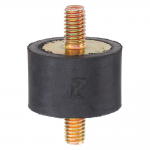SceneryDriver
Senior Member
- Location
- NJ
- Occupation
- Electrical and Automation Designer
Looking at quoting a job that will require (4) 20A single-pole breakers feeding duplex Edison receptacles, all fed from a 50A or 60A 120V source. Normally, I'd just use a 4-space QO panel and not think too much about it. This job though, will require vibration resistance as the piece of machinery the panel is being mounted to will vibrate in use.
Opinions on vibration resistance of standard stab-on QO breakers? I ask about QO because I see them all the time in campers and RV's and it doesn't sound like rampant failures are occurring. Would bolt-on breakers fare better?
Anyone know if Square D makes a 4-space bolt on buss panel (space is tight)?
Suggestions for another manufacturer / approach? Fuses are out; I have little faith that a blown fuse would be replaced properly. If I fuse at 20A, I just know some muppet is going to replace it with a 30A the first time they blow a fuse.
I'm also considering DIN rail -mounted QO breakers, but this is going somewhere relatively remote, and I'm almost sure the local sparky won't be stocking those if the client needs a replacement on short notice.
Thanks,
SceneryDriver
Opinions on vibration resistance of standard stab-on QO breakers? I ask about QO because I see them all the time in campers and RV's and it doesn't sound like rampant failures are occurring. Would bolt-on breakers fare better?
Anyone know if Square D makes a 4-space bolt on buss panel (space is tight)?
Suggestions for another manufacturer / approach? Fuses are out; I have little faith that a blown fuse would be replaced properly. If I fuse at 20A, I just know some muppet is going to replace it with a 30A the first time they blow a fuse.
I'm also considering DIN rail -mounted QO breakers, but this is going somewhere relatively remote, and I'm almost sure the local sparky won't be stocking those if the client needs a replacement on short notice.
Thanks,
SceneryDriver

